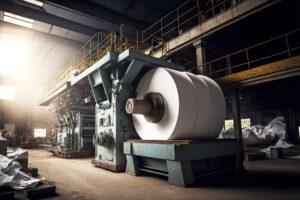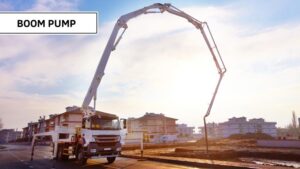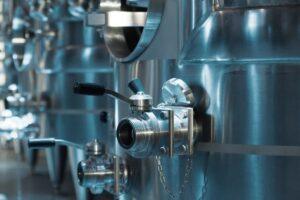
Concrete is the backbone of modern construction, forming the foundation of everything from towering skyscrapers to residential patios.
To achieve quality concrete structures, precise equipment and effective pumping techniques are essential.
This blog post explores the various types of pumps and equipment integral to the concrete process, highlighting their importance and functionality.
Concrete Pumps: The Heart of Concrete Placement
Concrete pumps are pivotal in transporting concrete from the mixer to the desired location on the construction site. There are two primary types of concrete pumps: boom pumps and line pumps.
Boom Pumps
Boom pumps are equipped with a robotic arm (or boom) that can extend to significant heights and distances, making them ideal for large-scale projects like high-rise buildings. These pumps are mounted on trucks for mobility and can deliver concrete with high precision, even to hard-to-reach areas.
Advantages of Boom Pumps
- Efficiency: Capable of pumping large volumes of concrete quickly.
- Reach: The extendable boom can maneuver around obstacles, reducing the need for extra labor.
- Precision: Ensures accurate placement of concrete, minimizing waste and rework.
Line Pumps
Line pumps, also known as trailer-mounted pumps, are smaller and more versatile. They use flexible hoses or rigid pipes to deliver concrete to specific locations, making them suitable for medium-sized projects like sidewalks, pools, and single-family homes.
Advantages of Line Pumps
- Versatility: Can be used for various applications and are easier to move around the site.
- Cost-Effective: They are generally less expensive to operate than boom pumps.
- Accessibility: Ideal for areas with limited space where boom pumps cannot maneuver.
Mixers: Ensuring Uniformity and Quality
Concrete mixers are crucial in ensuring that the concrete is thoroughly mixed to achieve the desired consistency and strength. The two main types of mixers used in construction are drum mixers and volumetric mixers.
Drum Mixers

Drum mixers are the most common type of mixers and are used on many construction sites. They come in two variants: tilting drum mixers and non-tilting drum mixers. These mixers use a rotating drum to mix the concrete ingredients.
Advantages of Drum Mixers
- Efficiency: Can produce large quantities of concrete in a short time.
- Uniformity: Ensures even mixing of all components for consistent quality.
- Durability: Designed to withstand the rigors of heavy use on construction sites.
Volumetric Mixers
Volumetric mixers are mobile units that mix concrete on-site. They carry the raw materials in separate compartments and combine them in the required proportions to produce fresh concrete as needed.
Advantages of Volumetric Mixers
- Flexibility: Can adjust the mix on the fly to meet specific requirements.
- Freshness: Delivers freshly mixed concrete, reducing the risk of setting before use.
- Precision: Allows for precise control over the mix proportions, ensuring high-quality results.
Batching Plants: The Foundation of Concrete Production
Batching plants are facilities used to produce large quantities of concrete by mixing various ingredients such as cement, water, aggregates, and admixtures. These plants ensure that the concrete produced meets the specific requirements of the project.
Types of Batching Plants
1. Stationary Batching Plants: Ideal for projects that require a large volume of concrete over an extended period. These plants are fixed installations and are capable of producing concrete in high quantities.
2. Mobile Batching Plants: These plants are portable and can be moved to different sites as needed. They are perfect for projects that are spread out or require concrete in different locations.
Advantages of Batching Plants
- Consistency: Ensures uniformity in the mix by precisely measuring each ingredient.
- Scalability: Can be scaled up or down based on the project size and requirements.
- Automation: Many modern batching plants are fully automated, reducing the need for manual intervention and increasing efficiency.
Conveyors: Enhancing Material Handling
Conveyors are used to transport concrete and other materials around the construction site efficiently. They are especially useful in large-scale projects where moving materials manually would be impractical.
Types of Conveyors
1. Belt Conveyors: These are the most common type of conveyors used in concrete construction. They use a continuous belt to transport materials and can be adjusted to different angles and lengths.
2. Screw Conveyors: Used for transporting granular materials or small aggregates. They consist of a helical screw that rotates within a tube, moving the material along its length.
Advantages of Conveyors
- Efficiency: Speeds up the process of transporting materials, reducing downtime.
- Versatility: Can be used for a variety of materials, not just concrete.
- Automation: Can be integrated with other systems to create a fully automated material handling process.
Vibrators: Ensuring Compaction and Strength

Concrete vibrators are essential for ensuring the concrete is properly compacted, eliminating air bubbles, and ensuring it fills all the voids and forms.
Types of Vibrators
1. Internal (Needle) Vibrators: These are inserted directly into the concrete and are ideal for compacting concrete in deep or large forms.
2. External Vibrators: Attached to the outside of the formwork, these vibrators are used when internal vibration is not feasible.
3. Surface Vibrators: Used on flat surfaces like slabs to ensure proper compaction and a smooth finish.
Advantages of Concrete Vibrators
- Strength: Ensures the concrete achieves its maximum strength by removing air pockets.
- Durability: Enhances the durability of the concrete by ensuring it is properly compacted.
- Quality: Improves the overall quality and appearance of the finished product.
Conclusion
The efficiency and success of concrete construction heavily rely on the proper use of pumps and equipment. From the initial mixing stages to the final placement and compaction, each piece of equipment plays a vital role in ensuring the concrete is of high quality, durable, and fit for purpose.
Understanding the functions and advantages of each type of equipment can help construction professionals choose the right tools for their projects, ultimately leading to better outcomes and more efficient construction processes.
By investing in the right concrete pumps, mixers, batching plants, conveyors, and vibrators, construction companies can significantly enhance their productivity, reduce waste, and ensure the structural integrity of their projects. Moreover, as technology advances, we can expect even more innovations in concrete processing equipment, further transforming the construction landscape.










